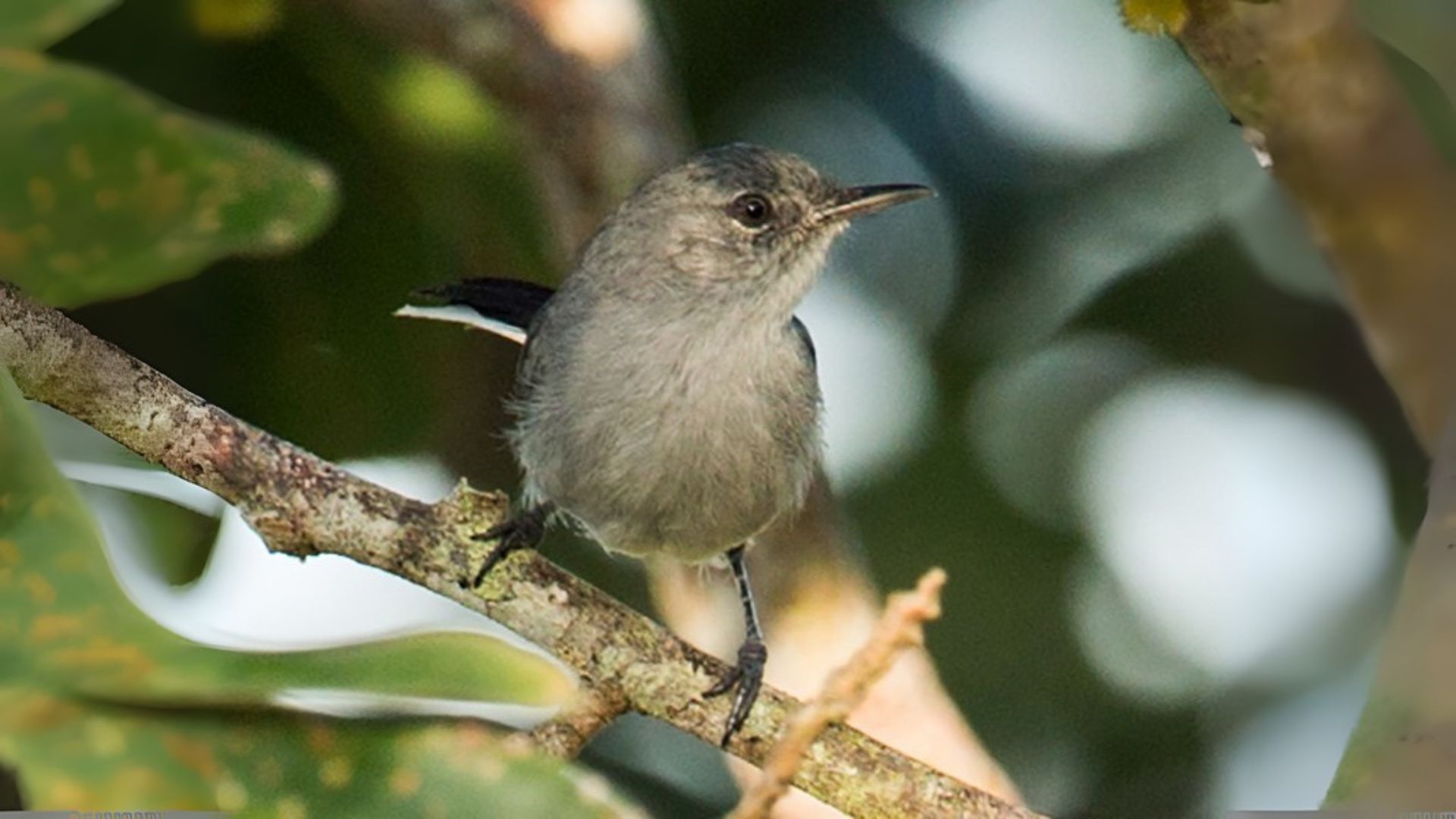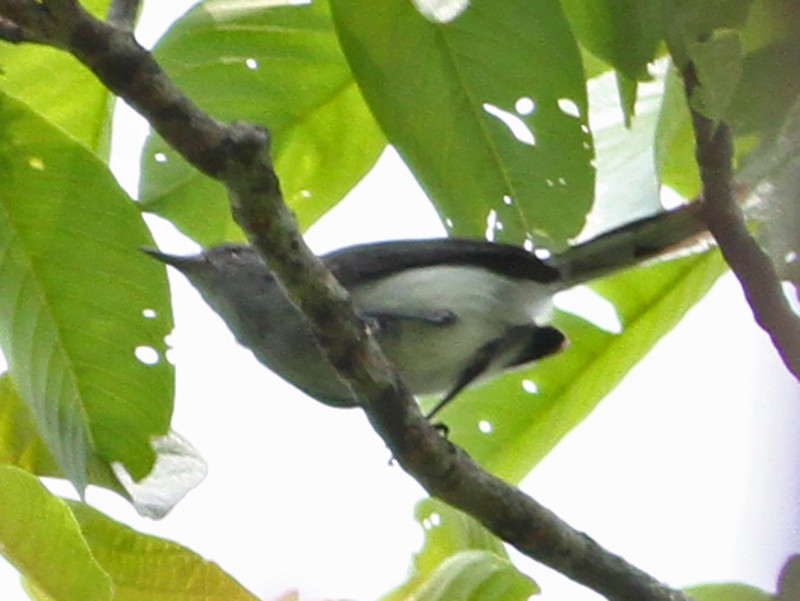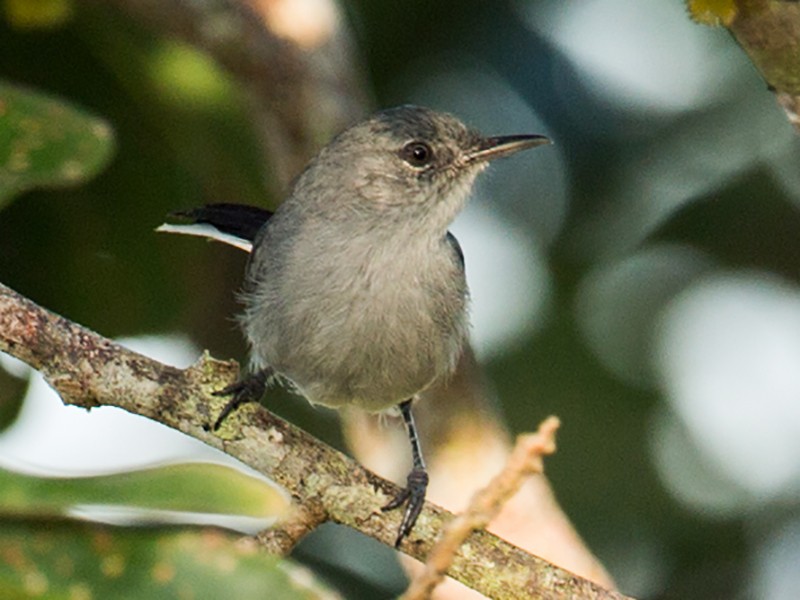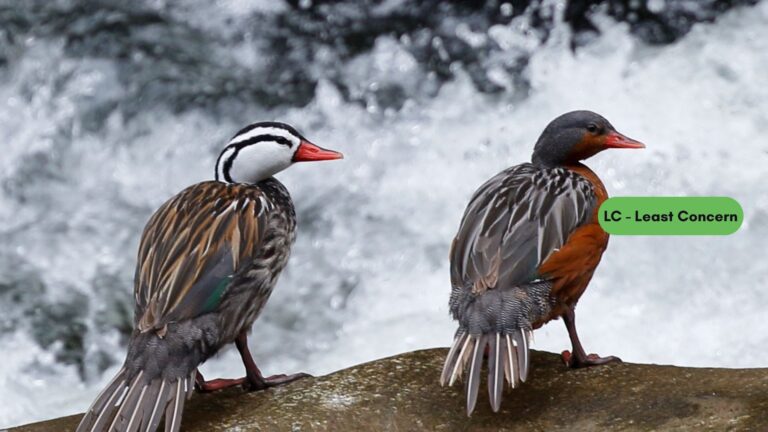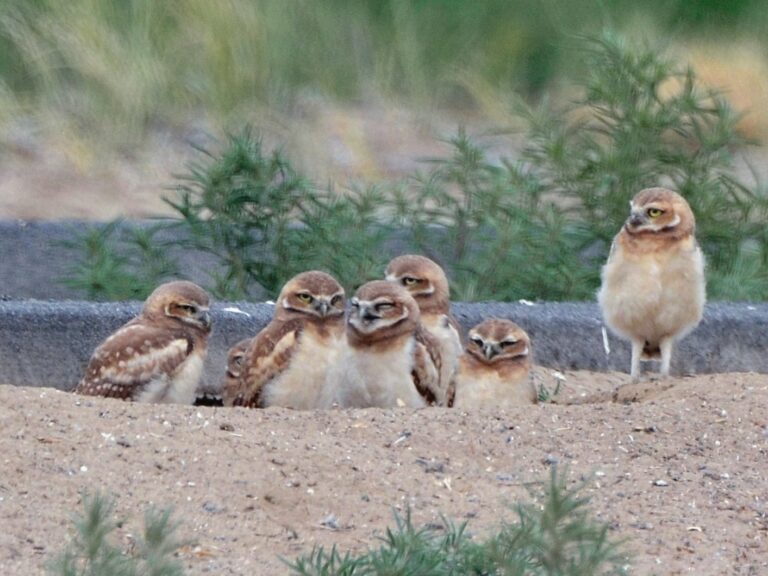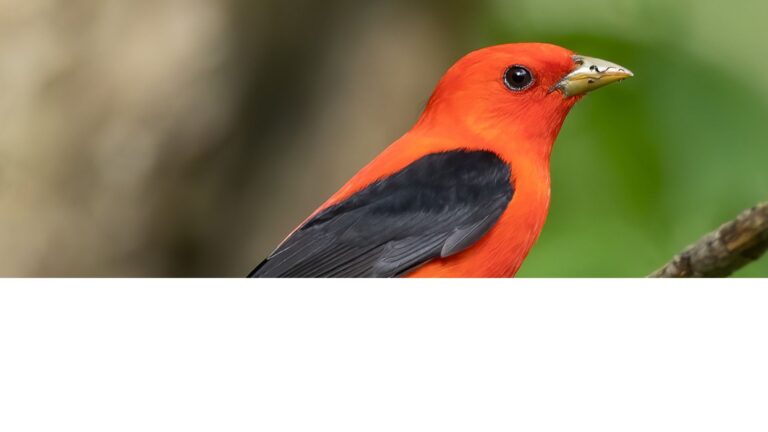Klages’s Gnatcatcher: Discovering the Charismatic Bird of the Southwest
Klages’s Gnatcatcher is a small bird that folks often miss, but it has a few quirks that make it worth a closer look. This species stands out for its distinctive features and particular habitat preferences, mostly in certain corners of South America.
Bird enthusiasts and ecologists have started to notice its growing importance within local ecosystems. Examining the Klages’s Gnatcatcher gives us a window into its habits, feeding style, and where it sits on the conservation spectrum.
Digging into its taxonomy and how it relates to other birds can really boost your appreciation for its spot in the avian world. From its oddball morphology to its specialized behaviors, Klages’s Gnatcatcher is honestly a fascinating subject for birdwatchers and researchers.
Key Takeaways
- Klages’s Gnatcatcher prefers specific habitats in South America.
- Understanding its behavior and ecology is crucial for conservation.
- Its unique traits add to local biodiversity and avifauna.
Taxonomy and Classification
If you dig into the taxonomy and classification of Klages’s Gnatcatcher, you’ll start to see how it fits into the bird family tree. This section peeks at its scientific name, family links, and a quick rundown of its genus and species.
Sign Up for Our Monthly Newsletter
Every month we send out our newsletter about interesting (and sometimes quirky) things happening in the world of birding. Give it a try!
Scientific Naming and Etymology
Klages’s Gnatcatcher’s official name is Polioptila californica, named after ornithologist Paul Klages. The genus name Polioptila comes from Greek and means “small gray,” which matches the bird’s look pretty well.
The species name “californica” points to its connection with California, where people first spotted it. This naming nods to both its range and the value of proper classification for tracing its evolutionary roots.
Family and Related Species
Klages’s Gnatcatcher sits in the family Polioptilidae, along with other gnatcatchers and gnatwrens. They’re part of the Passeriformes order, famous for perching birds.
Related species in this family include the Guianan Gnatcatcher (Polioptila guianensis) and the Para Gnatcatcher (Polioptila paraensis). These birds often forage in shrubs and low vegetation, sharing similar hangouts and habits.
Spotting the differences between these species can be tricky, so accurate classification really matters for conservation.
Genus and Species Overview
The Polioptila genus covers several gnatcatcher species. These little birds show off a variety of physical quirks, but they all share that restless, energetic foraging style.
Klages’s Gnatcatcher, in particular, has vibrant blue-gray feathers and a song that stands out. It plays a big part in its ecosystem by keeping insect populations in check.
Distribution and Habitat
Klages’s Gnatcatcher mostly sticks to select regions with a mix of ecosystems. You’ll find it across parts of Brazil, especially in the Amazon basin. Knowing where it lives and what it likes in a habitat gives us a better sense of how it survives and interacts with its world.
Geographic Range
This bird hangs out mainly in Brazil’s central Amazon region. Its range includes places around Manaus and the Amazon River, and sometimes you’ll spot it in nearby provinces.
It likes lowland habitats, and researchers have noticed that groups often cluster in certain rainforest areas where there’s plenty of moisture and thick greenery. Occasionally, people have seen it further south, near São Paulo, but that’s a rare treat.
Preferred Ecosystems
The gnatcatcher thrives in a bunch of Amazon forest types. It goes for dense, moist forests with lots of life, especially the lower canopy where food’s easier to find.
It needs tall trees and thick undergrowth for nesting and feeding. You’ll sometimes catch it sharing space with other critters, like the neotropical pygmy squirrel, since they like similar spots.
Habitat Interactions
In its turf, Klages’s Gnatcatcher interacts with plenty of wildlife. It hunts insects and tiny invertebrates, keeping the ecosystem in balance.
Its nesting sites, usually hidden deep in the foliage, help it dodge predators and support forest biodiversity. Seeing this bird around often means the habitat’s in good shape, with a healthy web of life. If you want to dig deeper, check out avifaunal studies from the Amazon.
Morphology and Identification
Klages’s Gnatcatcher has some physical details that make it stand out if you know what to look for. Its looks and sounds both help birders spot it in the wild.
Physical Characteristics
This bird is tiny, measuring about 10-12 cm from beak to tail. It’s got a slim body and a long tail, which it often cocks up at a jaunty angle.
The bill is thin, a little curved, made for snatching up insects. Its feathers are grayish on top, lighter underneath, which helps it blend into the background. You’ll notice a faint wing-bar if you look close. Short, sturdy legs let it dart through brushy patches without much trouble.
Comparison with Similar Species
In terms of size and shape, you might mix up Klages’s Gnatcatcher with the white-tailed cotinga or the black manakin—they live in the same places. But the gnatcatcher’s tail posture and gray coloring set it apart.
The wing-barred piprites shares its habitat, too, but lacks that cocked tail and has a different color scheme. Birders should keep an eye out for these subtle differences to avoid misidentification.
Plumage and Markings
This species sports delicate markings you’ll want to note. The upperparts are a soft gray-brown, while underneath, they’re lighter—almost creamy.
Key markings include:
- A faint but important wing-bar for ID.
- Tail feathers with small white tips that catch the eye.
- Juveniles show up duller, missing the richer tones adults have.
These features make Klages’s Gnatcatcher a bit of a gem for birders, especially when you catch it among other small birds.
Vocalization
Klages’s Gnatcatcher is pretty musical. Its calls drift through the forest, especially in the early morning—soft notes, nothing too harsh, but easy to pick out if you’re listening for them.
Some folks say its song reminds them of canaries, but it’s gentler. By comparison, the golden parakeets and black manakin are much louder and rougher. If you’re trying to spot one, tuning in to these calls really helps, especially since the bird can vanish into the leaves.
Behavior and Ecology
Klages’s Gnatcatcher has a set of behaviors and ecological quirks that shape its place in the forest. Its diet, breeding habits, and social life all play a part in how it survives and adapts.
Diet and Foraging
It mostly eats tiny insects and spiders, using different tricks to find food—sometimes it picks bugs off leaves, sometimes it hovers near branches. You’ll spot it poking around in thick undergrowth, always looking for a meal.
During breeding season, it might add some fruits and berries to the menu. That variety helps keep its energy up. Other birds, like the orange-bellied antwren and scaly-breasted wren, go after the same food, so there’s a bit of competition in the mix.
Breeding and Reproduction
Usually, Klages’s Gnatcatcher breeds once a year. The female does most of the nest-building, tucking a cup-shaped nest deep in the vegetation for safety.
She lays three to five eggs and incubates them for about 12 to 14 days. Both parents pitch in to care for the chicks. The male helps guard the territory, keeping things safe for the family. Sometimes, nearby species like the rufous-necked puffbird and brown-bellied antwren can affect how well the nest does.
Social Structure
You’ll usually see Klages’s Gnatcatcher alone or in small family groups. They get pretty territorial, especially when it’s breeding time. The male can get feisty, chasing off rivals to protect resources.
Sometimes, they interact with other birds like the dusky parrot or pale-bellied mourner, especially where their habitats cross. These run-ins can help with foraging, since they might tip each other off about food. Even though they’re mostly loners, Klages’s Gnatcatcher does well in biodiverse spots, which seems to help it hang on as a species.
Conservation Status
Klages’s Gnatcatcher’s conservation status really matters for its future. Ongoing assessments and efforts shape what’s next for this bird.
Current IUCN Assessment
The IUCN currently lists Klages’s Gnatcatcher as vulnerable, which means it faces a high risk of extinction in the wild. Its limited range and dropping population numbers drive this status.
Birders and researchers keep a close eye on its numbers, especially in its South American home turf. For more details, check the IUCN Red List.
Threats and Challenges
Klages’s Gnatcatcher faces some pretty tough threats these days. Habitat destruction—mostly from agriculture and urban sprawl—hits especially hard.
This bird really depends on certain environments, so when those disappear, its chances drop. And climate change? That just piles on more challenges, like unpredictable weather messing with their food supply.Birding tours in these regions often shine a light on these problems. They get people thinking about what it takes to keep these birds around.
Conservation Efforts and Research
Conservation groups are working hard to protect Klages’s Gnatcatcher. They’re restoring habitats and setting up protected areas to keep the bird’s home safe.
Researchers also track their breeding and population trends, collecting data to guide the next steps. Birding communities pitch in by sharing eco-friendly tips and supporting these projects. With more people aware and involved, there’s at least a shot at stabilizing—or maybe even boosting—the Klages’s Gnatcatcher population.
Associated Avifauna and Biodiversity
The bird life connected to Klages’s Gnatcatcher brings an extra layer of richness to the Amazon. Digging into these relationships really shows how deeply they matter in local habitats. It’s fascinating to see how these species interact and overlap.
Sympatric Bird Species
Klages’s Gnatcatcher isn’t alone out there—it shares its home with a bunch of other birds. The seven-colored tanager and the harlequin antbird are two standouts, both thriving in dense, leafy spots.
There’s also the scalloped antbird and alagoas tyrannulet, who hang out in similar territories. Birds like the streak-throated hermit and long-tailed woodnymph often forage in the same patches, showing off their knack for sharing resources.
This mix of species brings out the competition and teamwork that keeps the ecosystem humming.
Role in Local Ecosystems
Klages’s Gnatcatcher actually plays a bigger role than you might guess. It helps keep insect numbers in check and, honestly, sometimes ends up as a meal for bigger birds like the harpy eagle.
When it feeds, it spreads seeds around, which helps plants grow and keeps the place diverse. Its presence also supports birds like the yellow-throated flycatcher and black-tailed leaftosser.
They all rely on similar foods and habitats, weaving an intricate web that keeps things balanced. That interconnectedness? It’s a big reason to keep their habitats safe, if you ask me.
Notable Species of the Amazon Basin
The Amazon Basin just bursts with unique birds. The pompadour cotinga and chestnut-winged hookbill grab your attention with their wild colors.
Other cool species, like rufous-bellied antwren, white-plumed antbird, and chestnut-rumped woodcreeper, show off all sorts of feeding tricks—from chasing insects to snacking on fruit.
Then you’ve got birds such as smoky-fronted tody-flycatcher and green aracari helping out with pollination and seed spreading. Their daily routines keep the forest ticking, tying the Amazon’s birds together in ways that are honestly pretty amazing.
Frequently Asked Questions
Here are some of the questions people usually ask about Klages’s Gnatcatcher and its relatives. You’ll find info about their conservation status, what they look like, what they eat, where they nest, and even their mating habits.
Are certain species of Gnatcatchers considered at risk?
Yeah, some Gnatcatcher species are definitely at risk from habitat loss and environmental shifts. When their homes disappear, their numbers drop.
Protecting these birds really depends on ongoing conservation work.
How can one distinguish between the Black-tailed Gnatcatcher and the Blue-gray Gnatcatcher?
The Black-tailed Gnatcatcher sports a bold black tail edged in white. The Blue-gray Gnatcatcher, on the other hand, looks lighter blue-gray and has a subtler tail.
If you’re trying to tell them apart, those tail and color details are your best bet.
What forms the dietary basis for birds within the Gnatcatcher family?
Gnatcatchers mostly eat insects and small invertebrates. Sometimes, especially during migration, they’ll snack on berries or fruit too.
This variety helps them get through the year, no matter what’s on the menu.
What methods can be employed to attract Gnatcatchers to a backyard or garden?
If you want to see Gnatcatchers in your yard, try planting native shrubs and keeping some low vegetation around. Add a water source and skip the pesticides if you can.
Some folks even put out feeders with insects or suet, which can draw them in.
What type of habitat is preferred by Gnatcatchers for nesting?
Gnatcatchers go for shrubby spots—edges of woods, desert scrub, or even open forests. They usually tuck their nests into dense shrubs or low trees.
That way, they get some shelter and a bit of protection from anything lurking nearby.
How does the mating behavior of Gnatcatchers differ from other birds?
Gnatcatchers have their own style when it comes to courtship. During breeding season, males show off with a mix of vocal calls and some wild aerial acrobatics.
These displays help them catch the attention of females. It’s a bit different from the more typical mating moves you see in many other bird species.
